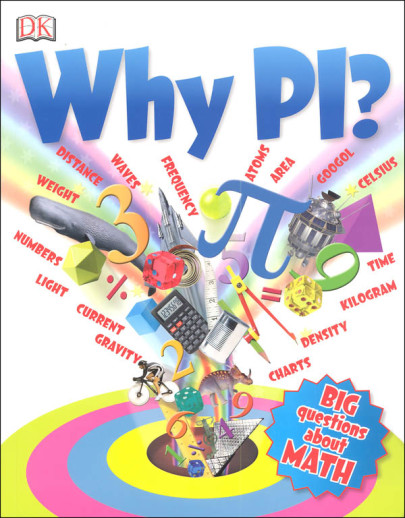We use cookies to make your experience better. To comply with the new e-Privacy directive, we need to ask for your consent to set the cookies. Learn more.
Why PI?
Many young math students never learn the story of how and why people have chosen to measure things over the span of human history. This book will give students a greater understanding of the value and usefulness of mathematics to the progress of civilization as they study many of the most significant developments in the field of mathematical reasoning and measurement. Contrary to the assumption of many, the history of math has a fascinating story to tell, and this colorful and beautifully illustrated book will help to bring that story to life. If you have a young student that needs to be inspired and motivated to recognize the importance of mathematical reasoning, then do not hesitate to purchase this excellent supplemental resource. 92 pgs, pb. ~ Mike
If you think numbers are boring, think again! Imagine the world without measurements: What time is it? Are we nearly there yet? How big do you want it? Why Pi? takes readers through a mesmerizing, historical number journey, from the ancient civilizations that used numbers as simple measurement, through the Renaissance period with the conquering of the seas and mapping of the world, the Industrial Revolution, and all the way on to Einstein's theory of relativity and discovering space. Numbers are eternal and have been a crucial element in human history. From sailing the seven seas to journeying deep below the waves and up through the atmosphere, it's all about numbers. Discover how simple modern-day things are all about measurement and see how the future will be shaped by numbers as we travel farther into space.
Numbers aren't just about sums and calculations, and there is no one better at illustrating this than the ingenious Johnny Ball as he demonstrates just how essential math is to our everyday world. Why Pi? examines how numbers have allowed explorers, engineers, and scientists to explore, build, and discover.
| Product Format: | Paperback |
|---|---|
| Brand: | Dorling Kindersley |
| Grades: | 2-5 |
| ISBN: | 9781465443878 |
| Length in Inches: | 10.875 |
| Width in Inches: | 8.5 |
| Height in Inches: | 0.3125 |
| Weight in Pounds: | 0.9 |

